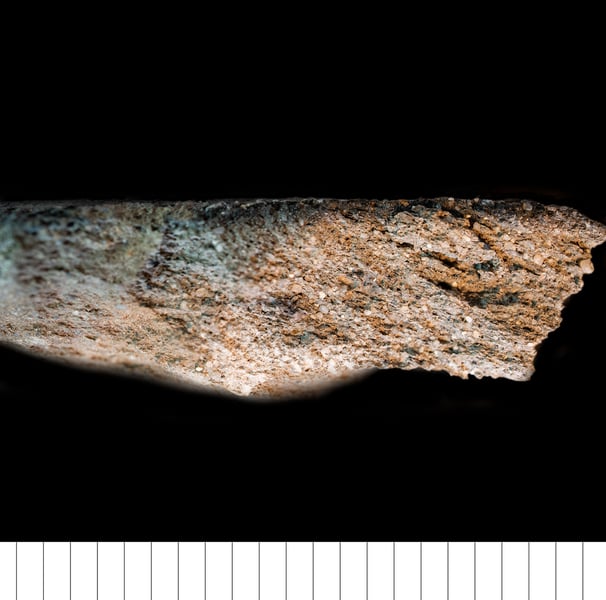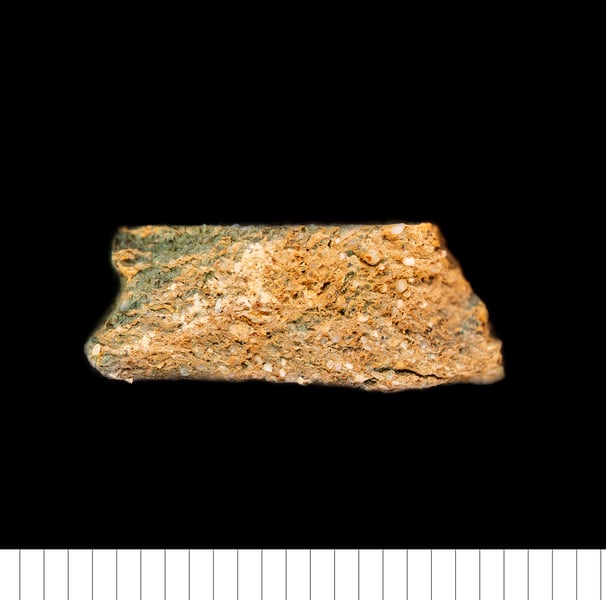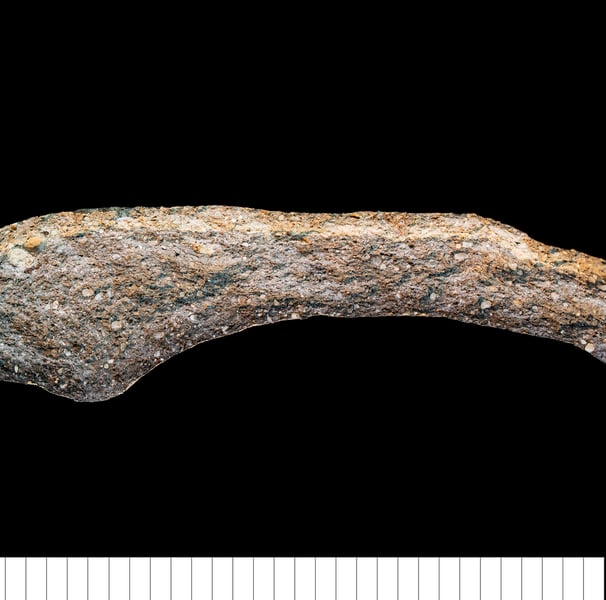LMU - Local medieval unglazed (Potter Heigham)
Abundant very fine sand (generally clear, sub-angular, up to 0.3mm), few other inclusions - sometimes rare ferrous oxide and burnt organics. Pale grey, sometimes with dark grey external surface or patches of darker grey.
TS description (H. Page): Moderately sorted, frequent, sub-rounded to sub-angular, coarse to very coarse quartz and polycrystalline quartz, and frequent medium and fine quartz inclusions. Common biotite mica, fewer muscovite mica, and rare microcline and plagioclase feldspar and rounded very rare chert inclusions and weathered feldspar. Relatively heterogenous, brown, moderately optically active, oxidised, non-calcareous matrix. Few discordant dark red-brown textual features of high optical density and few concordant textual features of a low optical density with merging boundaries. The concordant textual features with no quartz inclusions are dehydrated lumps of base clay and possibly indicate the fabric was tempered with sand. Frequent meso- vughs and meso-macro elongate channels.






LMU - Local medieval unglazed (Woodbastwick)
Moderate fine to medium sand in a silty matrix (generally clear, some yellow-brown, sub-rounded, up to 0.8mm), sparse to moderate ferrous oxide. Grey, sometimes buff.
TS description (H. Page): Very poorly sorted, frequent fine and very fine quartz and few coarse and very coarse quartz and polycrystalline quartz. Common fine, elongate muscovite mica, and very rare plagioclase feldspar and chert, and very rare unidentifiable inclusion with colourful interference cf. clinopyroxene. Relatively heterogeneous, yellow-brown to mid-brown, non-calcareous, weak to moderately optically active matrix. Few discordant iron rich textual features with high optical density and rare concordant textual features with neutral optical density. The concordant textual features are lumps of hydrated based clay and is a possible indication that the fabric has been sand tempered. Few meso-vughs and rare meso-channels. Fabric similar to Potter Heigham LMT.
LMU - Local medieval unglazed (Fleggburgh)
Moderate to abundant fine-medium sand (mainly clear, some yellow/brown, sub-angular and sub-rounded, up to 0.5mm), rare to sparse ferrous oxide. Grey.
TS description (H. Page): Moderately sorted, frequent, rounded to sub-angular coarse to fine quartz and rare polycrystalline and microcrystalline quartz. Rare inclusions of microcline feldspar, elongate muscovite and biotite mica, and hornblende. Relatively heterogeneous, mid-brown to grey, non-calcareous, oxidised matrix with moderate optical activity. Some rare discordant iron rich textual features of high optical density and a large concordant textual feature of a neutral optical density and iron streaking. Sparse micro to micro- vughs and channels.


LMU-V - Local medieval unglazed variant
Fine sandy wares similar in appearance and forms to Norwich-type LMU, but the fabric tends to be slightly different - e.g. finer, or more micaceous, or slightly coarser.
Copyright
This website, and the type series, was created by Dr Sue Anderson, Spoilheap Archaeology: www.spoilheap.co.uk
I am available for contract work on pottery from East Anglia and beyond. Email sue@spoilheap.co.uk
© 2024. All rights reserved.
To visit the type series at Suffolk County Council Archaeological Service, Bury St Edmunds, contact Faye Minter: Faye.Minter@suffolk.gov.uk
Tel: 01284 741 228 to make an appointment.